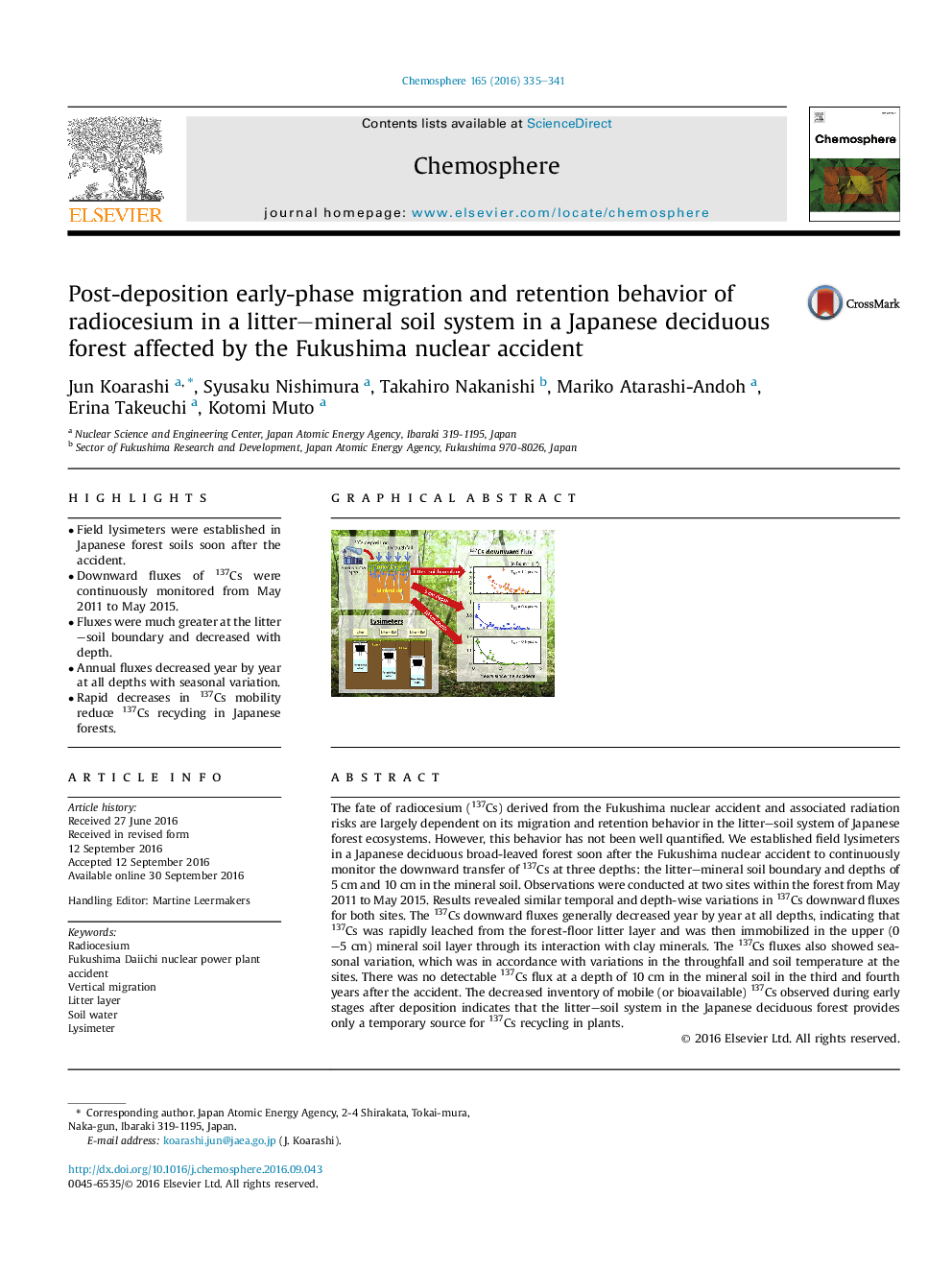| کد مقاله | کد نشریه | سال انتشار | مقاله انگلیسی | نسخه تمام متن |
|---|---|---|---|---|
| 4407303 | 1618806 | 2016 | 7 صفحه PDF | دانلود رایگان |
• Field lysimeters were established in Japanese forest soils soon after the accident.
• Downward fluxes of 137Cs were continuously monitored from May 2011 to May 2015.
• Fluxes were much greater at the litter–soil boundary and decreased with depth.
• Annual fluxes decreased year by year at all depths with seasonal variation.
• Rapid decreases in 137Cs mobility reduce 137Cs recycling in Japanese forests.
The fate of radiocesium (137Cs) derived from the Fukushima nuclear accident and associated radiation risks are largely dependent on its migration and retention behavior in the litter–soil system of Japanese forest ecosystems. However, this behavior has not been well quantified. We established field lysimeters in a Japanese deciduous broad-leaved forest soon after the Fukushima nuclear accident to continuously monitor the downward transfer of 137Cs at three depths: the litter–mineral soil boundary and depths of 5 cm and 10 cm in the mineral soil. Observations were conducted at two sites within the forest from May 2011 to May 2015. Results revealed similar temporal and depth-wise variations in 137Cs downward fluxes for both sites. The 137Cs downward fluxes generally decreased year by year at all depths, indicating that 137Cs was rapidly leached from the forest-floor litter layer and was then immobilized in the upper (0–5 cm) mineral soil layer through its interaction with clay minerals. The 137Cs fluxes also showed seasonal variation, which was in accordance with variations in the throughfall and soil temperature at the sites. There was no detectable 137Cs flux at a depth of 10 cm in the mineral soil in the third and fourth years after the accident. The decreased inventory of mobile (or bioavailable) 137Cs observed during early stages after deposition indicates that the litter–soil system in the Japanese deciduous forest provides only a temporary source for 137Cs recycling in plants.
Figure optionsDownload as PowerPoint slide
Journal: Chemosphere - Volume 165, December 2016, Pages 335–341
